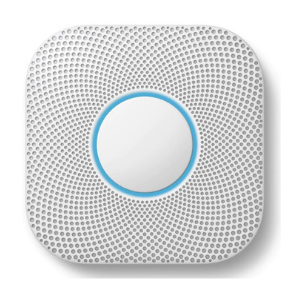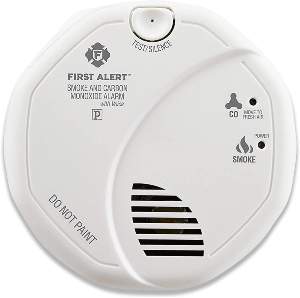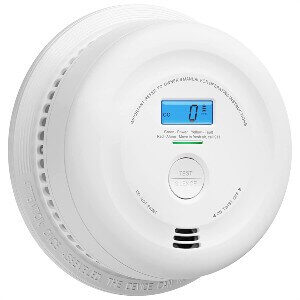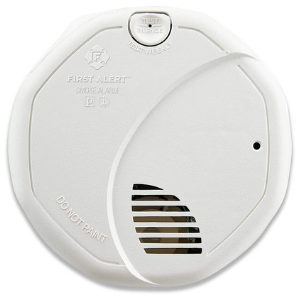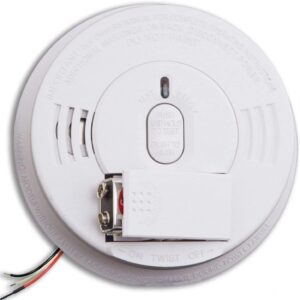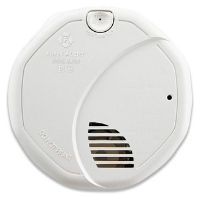We scoured industry research, ratings, and reviews to bring you the best smoke detectors.
Best Smoke Detectors of 2025
For over 11 years, SafeWise experts have conducted independent research and testing to create unbiased, human reviews. Learn how we test and review.
Alina writes for MSN, MTV, and CBSNews, blending safety expertise with her passion for simplifying technology. Alina was also trained as a first responder and worked as a volunteer firefighter.
Don't Miss Google Store Extended Black Friday Deals!
Get some of the best deals of the year on Google Store gadgets. From phones, watches, and earbuds to Nest security cameras, wifi hubs, thermostats and more. Here are a few sneak peeks:
- Save up to $100 on Pixel Watch 3
- Save $120 on a Nest Wi-Fi Pro 3-pack
- Save $50 on the Nest Learning Thermostat
Offers and availability may vary by location and are subject to change. Smart home offers end December 4, 2024 at 11:59 PM PT. Google, Google Nest, Google Assistant, and other related marks are trademarks of Google LLC.
It’s easy to forget your smoke alarm’s there until it starts beeping or chirping. But while we take them for granted, they’re always keeping tabs on fire safety.
Our top pick Google Nest Protect is expensive, but all its extras, like its carbon monoxide alarm, make it worth the price. It offers remote notifications, a light, voice notifications, and more.
What are the best smoke detectors of 2025?
- : Best overall
- : Best budget pick
- : Best digital display
- : Best basic
- : Best battery changes
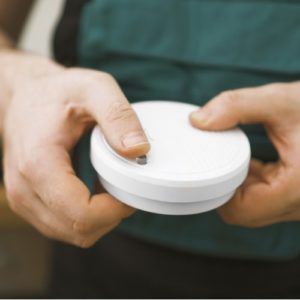
What to consider when buying a smoke detector
In 2022, the U.S. Fire Administration estimated there were about 374,300 fires. If you have smoke detectors in your home, you’ll have a better chance of getting everyone out safely. While any smoke detector is better than none, here are a few things to look for when buying a new smoke alarm.
Multifunctional
The best smoke alarms can detect smoke particles, flames, and carbon monoxide. A multifunctional alarm can save you battery life or energy from your house for hard-wired smoke detectors. Combination smoke, fire, and carbon monoxide detectors are easier than ever to find.
Smart
While classic ionization and photoelectric smoke detectors are helpful, smart smoke detectors are the cutting edge in fire safety. They communicate through apps and deliver alerts to your phone or other mobile devices if an alarm sounds.
Smart alarms can talk to each other too, so you’ll know exactly where the fire is when an alarm is triggered. The only downside is that smart devices are more expensive.
Backup power
If your home's power goes out, you still need to know if there's a fire or smoke emergency. Hard-wired smoke detectors need to have a battery backup or some other backup power source to keep them running.
If the power goes out, it takes your smoke detector with it. Battery powered smoke detectors should have a test button or chirp when the battery starts to drain.
1. Google Nest Protect: Best overall
The Google Nest Protect keeps your home protected in more ways than one. Sure, it can detect smoke, but with its split-spectrum sensor, it detects smoldering fires as well as fires with active flames. It also detects carbon monoxide with an electrochemical sensor.
When a smoke or carbon monoxide detector is triggered, the Nest Protect will flash its built-in light, sound an alarm, and use voice alerts to let you know exactly what type of emergency it's detecting. It also sends alerts to your phone through the app.
This Google smoke detector can connect with other Nest Protect alarms in your home to create a network of safety. This means voice alerts could tell you where smoke or fire was detected. This can keep you safe as you exit your home because you'll know which rooms to avoid.
The drawback is it's expensive for a fire alarm. Still, the benefits are worth the price, especially if you have a smaller home that doesn't need too many smoke detectors. If you're on a budget, it's better to opt for the next pick.
2. First Alert SCO7CN: Budget pick
The First Alert SCO7CN not only detects smoke–it also detects unsafe levels of carbon monoxide (CO) in your home. Carbon monoxide is a colorless, orderless gas that can be deadly. Getting a CO detector is important because this gas is impossible to detect on your own.
On the front of the alarm, there are lights to let you know if there is a fire or CO emergency. Like the Nest Protect, the SCO7CN talks to you when there's an alarm.
Our favorite part is that the easy-access battery compartment makes it easy to change the batteries without removing it from the wall or ceiling.
Our guide can help you can learn more about CO detectors and the dangers of carbon monoxide gas.
3. X-Sense: Best digital display
The X-Sense is a little different from its competitors because it has a built-in digital display. You can see the battery level at a glance, and the display also features current CO levels in your home. It updates every 10 seconds, you get up-to-date readings.
This lithium battery smoke detector has an expected lifespan of 10 years and you never need to swap the battery out until it's time to replace the detector anyway. The display changes color to tell you if there's something wrong too. Red means the alarm is going off, yellow means there's something wrong with the alarm, and green means everything is a-okay.
Another helpful feature is that this carbon monoxide and smoke detector combo helps prevent false alarms. It takes three air samples before sounding the alarm.
4. First Alert SA320CN: Best basic
The First Alert SA320CN is fairly basic compared to our top pick. It's reliable, though, and that's the most important thing when it comes to fire detection. Plus, First Alert has been around since 1958 and is highly trusted.
The 85-decibel siren could be louder, but we think it should do just fine if you place multiple alarms throughout your home. It can detect both fire and smoldering using its dual sensors, and it has a testing button that can also be used to mute the alarm.
It's not the flashiest, but we think it's a great pick if you need a budget-friendly, no-fuss smoke detector.
If you or someone in your family experiences hearing loss or deafness, a wire-in strobe light can help. These devices connect with your existing smoke and fire alarms. When the smoke detector senses danger and sounds the alarm, the strobe light will flash to signal trouble.
5. Kidde Hardwired Smoke Detector: Best battery changes
With the Kidde hardwired smoke detector, changing batteries has never been easier. It’s simple to keep this smoke detector ready for action with the slide-load battery door on the front. This is the only smoke detector on our list with a quick-change battery.
This Kidde smoke alarm is also easy to install and can be interconnected with other alarms to create a full-house smoke detection system.
More smoke detectors we considered
First Alert BRK 312OB
The First Alert BRK 3120B (about $34) is dual-sensor smoke alarm that detects multiple kinds of fires and decreases false alarms. It’s also hardwired with a battery backup so you don’t have to worry about power failure.
Say goodbye to shrieking beeps while you’re cooking or after a hot shower. The First Alert's photoelectric smoke detector sensor is sensitive enough to tell the difference between everyday activities and real threats like a smoldering fire.
While we like this one, it has some shortcomings. Even with two smoke sensors, it doesn’t come with carbon monoxide detection.
Video: What Else Sets Off Smoke Alarms?
Subscribe to our YouTube channel and learn how to protect your home, loved ones, and belongings.
Types of smoke detectors
Smoke alarms typically have three types of sensors: ionization, photoelectric, and dual. Here are the main differences between the three.
Photoelectric
Photoelectric smoke alarm sensors use light to detect smoke. When smoke particles are suspended in the air (as with a smoldering fire) the particles scatter the beam of light in the sensory chamber, which sets off the alarm.
Ionization
Ionization smoke detectors use radiation and an ionization chamber to detect smoke. The ionizing radiation helps detect small amounts of smoke in the air, as with a flaming fire. When smoke enters the sensor chamber, the current of the ionizing radiation is disrupted, which triggers the alarm.
Dual sensors
Dual sensors include both photoelectric and ionization sensors. These are considered the safest smoke and fire detection devices. Because they detect both flaming fires and smaller, smoldering fires, it’s unlikely that any fire-related danger will get past these double-duty sensors.
Smoke detector installation and maintenance
Smoke alarms can save a life, but they have to be properly installed and maintained. Don’t risk your family’s safety—use these tips to keep your smoke detector alarm in tip-top shape.
Check batteries: According to a 2021 report from the National Fire Protection Association (NFPA), dead batteries are a major factor in smoke alarm failures. In fact, the reported death rate from a home fire is 51% lower in homes with working smoke alarms.
A smoke detector won’t do you any good if it isn’t working, so make sure to check your batteries every month and use the “test“ button intermittently to ensure proper function.
Arm every level: The National Fire Protection Association (NFPA) recommends putting a smoke detector on every level of your home: in every bedroom, outside every sleeping area, and in your basement. On floors without bedrooms, install alarms in the living area or near stairways.
If you have a large home, consider adding even more to cover the whole footprint.
Mount high: Smoke rises. It’s important to put your smoke detectors within a foot of your ceilings and 10 feet from cooking areas.
For vaulted ceilings, avoid putting smoke detectors in the “pitch” of the roofline. Instead, mount fire alarms 3 feet below the ceiling so they can accurately read smoke.
Never run out of batteries: Set up recurring delivery for smoke alarm batteries on Amazon. That way, you’ll always be ready to replace a dead battery in your smoke alarm. Time the delivery schedule to match regular smoke alarm maintenance so you’ll never overlook changing out old batteries.
Keep it clean: Dirt and debris interfere with the sensors on your smoke alarm. Dusty buildup can lead to false alarms or delayed detection during an emergency. Whether you have a photoelectric alarm or an ionization detector, regular cleaning will keep your smoke alarm in working order.
Dodge drafts: Keep smoke alarms away from windows, doors, and air ducts. Drafts can disrupt the operation of smoke detectors and increase the occurrence of nuisance alarms.
Get connected: Wired and wireless interconnected smoke alarms help ensure everyone in your home knows about the emergency. You can install the connection easily and it will sound the siren throughout the house using each of your fire alarms. It takes a few extra steps to set up and test, but it means family members in every room will get the warning.
Final word: Google Nest Protect wins!
Even though it's on the expensive side, we picked the Google Nest Protect as the best smoke detector because it's just so darn helpful. Beyond being able to detect carbon monoxide and different types of fires, the app removes the frustration that comes with typical fire alarms.
Smoke detector FAQ
If your smoke detector is beeping regularly, it could be because the batteries are running low.
Try changing the batteries first. If the beeping continues, the device may be sending false alarms. Make sure it's far enough from the bathroom or stove to avoid sensing heat or steam any time you use the room.
There are pros and cons to smart smoke detectors, but it boils down to your preference and budget.
Smart smoke detectors connect to your phone, allowing you to know when the alarm sounds when you aren’t home. But these aren’t totally foolproof either. They’re connected to your Wi-Fi, so if your internet connection drops, you may be without protection.
For the best results, we recommend testing your smoke detectors once a month. You’ll always be ready for an emergency and this will prevent false alarms and beeping from drained batteries.
You should have at least one smoke detector per floor and outside of each of your sleeping areas.
Smoke and fire detectors warn you when an emergency happens, but how do you prevent a fire in the first place?
Start with a few common safety practices like careful cooking, cleaning out lint traps frequently, and storing flammable products safely. It's also a good idea to keep a fire extinguisher on hand in the house and show everyone how to use it.
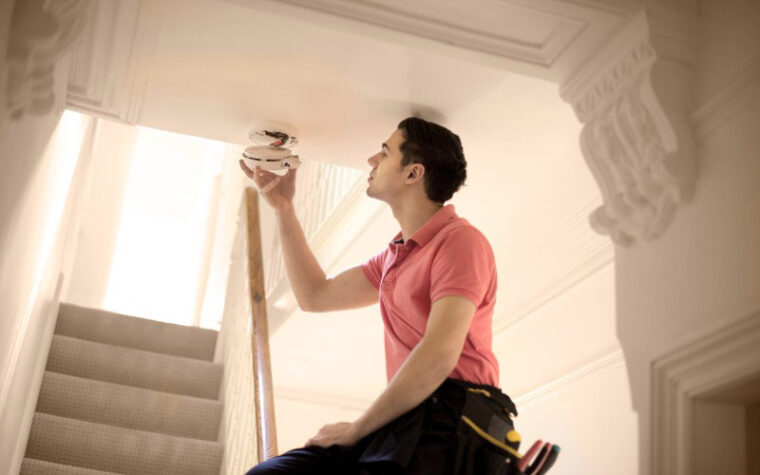
To determine the best smoke alarms, we scoured industry research and evaluated product features, performance, and specs. We also consulted the National Fire Protection Association and US Consumer Product Safety Commission for guidance and pored over expert ratings and real customer reviews.
Our 5 best smoke alarms were selected from 12 top devices that were compared for reliability, effectiveness, price, and customer satisfaction. Learn more about how we conduct reviews like this one from our methodology page.
Related articles
Product prices and availability are accurate as of the date/time indicated and are subject to change. Any price and availability information displayed on Amazon at the time of purchase will apply to the purchase of this product. Safewise.com utilizes paid Amazon links.
Certain content that appears on this site comes from Amazon. This content is provided “as is” and is subject to change or removal at any time.
Google, Google Nest Secure, [any other related Google Products] and other related marks are trademarks of Google LLC.
Recent Articles




